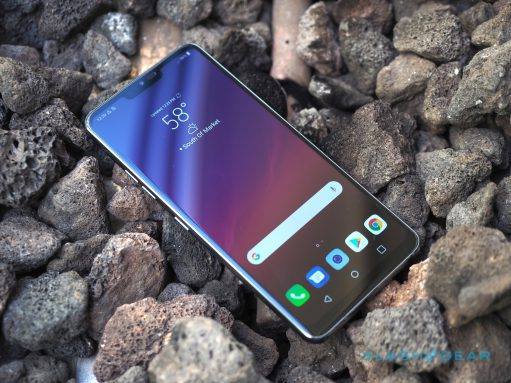If text and icons look too large on your 5.96-inch Nexus 6, changing the DPI just might be the answer you are looking for and here are the steps to do that.
I’m not sure why the default DPI on Android is set so high but it is really is annoying to me. Thankfully though, as long as you root your Nexus 6, you can change various things like this. The default DPI of an Android smartphone is entirely dependent on what the manufacturer decides to set it as.
The Android OEMs take things like display size and screen resolution into account when figuring out what they feel is best for their customers.
For example, the Nexus 6 comes with a default DPI of 560 while the LG G3 comes with a default DPI of 640. Now, changing the DPI will not have any effect on the battery life at all. It’s nothing more than an aesthetic difference and the perfect DPI value will be different for everyone. Some Nexus 6 owners even change it to 640 like the LG G3 has because they enjoy it when icons and text are bigger. Others want everything to be much smaller so they might set it down to 440. You should really experiment and see which value you think is best.
The images above give you an example of how things look different on the Nexus 5. Here is what the home screen looks like before and after changing the DPI. The default value on the Nexus 5 is 480 and I went ahead and set it to 380 so you could see the difference. As you can see, lowering the DPI by this much on the Nexus 5 makes things smaller(both text and icons) and it even introduces another row of icons that can be placed in the Google Now Launcher. Changing the system wide DPI like this will have similar effects on everything too. Browser text, buttons, etc. will all be changed to be bigger or smaller depending on how you change the DPI.
Requirements
In order to change the DPI of your Nexus 6, you will need to have root access so that you can make the change that is needed. If you haven’t done this yet then feel free to follow the how to root the Nexus 6 tutorial I have written about in the past. Once you have root access and you have SuperSU installed, then you can proceed with this tutorial right now. However, I would also recommend that you install a custom recovery on the Nexus 6 so that you can create a Nandroid backup of the Nexus 6. You should run into any bootloops by following this tutorial but anything we do any major changes to the Android system like this, it is always recommended that you create a backup before hand.
Nexus 6 Change DPI
- Download and Install Texdroider DPI
- Launch the Texdroider DPI Application
- Edit the ‘New DPI Number’ Field to the Desired Amount
- Tap on the ‘Apply’ Button
- Grant Root Access to Texdroider DPI
- Tap on the ‘Reboot’ Button
Explanation
Now, you could download a build.prop editor, locate the specific line that governs the DPI but I find that Texdroider is much more user-friendly. Some might think that using a build.prop editor would be safer and technically they are right. However, I have never found Texdroider DPI to cause an issue and until I do, I will continue to suggest it because the interface is incredibly easy to understand. Once you download the application you can install it and then go ahead and launch it.
When you launch Texdroider DPI, you are shown an input field where you can enter a New DPI number, a spot that tells you the current DPI number, and then what your DPI will be set to after you reboot. You also see an Apply and a Reboot button to control the Nexus 6 after you have set it to what you want it to be. So, once you launch the application, go ahead and change the ‘New DPI’ field to something you think you would like. If you want things to be bigger than they currently are, set the DPI to something larger than the current one. If you want things to be smaller than they currently are, set the DPI to be something smaller than the current one.
After you have the New DPI field set to something you want, double-check to make sure you aren’t missing a zero or something and then hit the ‘Apply’ button. After you hit the Apply button you should see the red ‘DPI after reboot’ value change. You should also be greeted with a SuperSU request asking whether or not you want to allow Texdroider to have root access. You want to allow Texdroider to have root access and if you want, you can even check the box that says to only allow Texdroider to have root access for 15 minutes. This is what I do so I don’t have applications having root access all the time when they don’t need it.
After you grant root access to Texdroider, you can then tap on the ‘Reboot’ button so that the application will shutdown your Nexus 6 and reboot it. You don’t have to do this right now and you could go through and manually reboot the Nexus 6 on your own. This is just a convenience factor and you have the ability to use it. Either way, changes to the DPI will not happen until you reboot the Nexus 6 so please be aware of that. Once you reboot your Nexus 6 you will see that everything looks a little different by either being smaller or larger. If you don’t like the way things look, go back into the application and change the DPI value again. You can experiment with this as many times as you would like until you get it just right.






